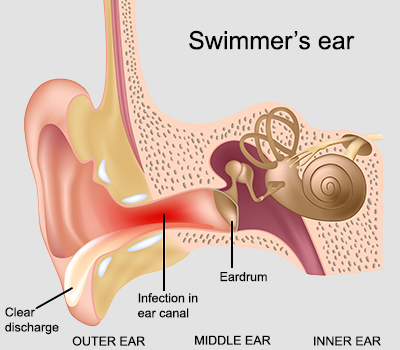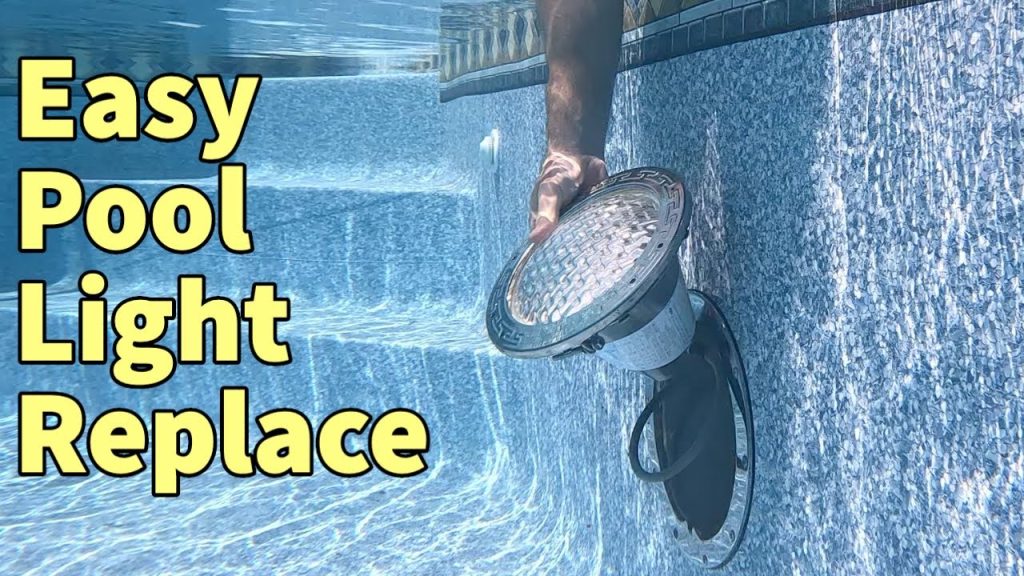Draining a swimming pool might seem like a big task. But it’s not as hard as you think.
Knowing the right steps can save time and prevent problems. Swimming pools need regular maintenance. Draining the pool is one crucial part of this. You might need to drain your pool for deep cleaning or repairs. Doing it right avoids damage to the pool and surrounding areas.
This guide will explain how to drain a swimming pool safely and efficiently. Whether you’re a new pool owner or experienced, these tips will help. Let’s dive into the details and make this task easy for you.
Preparation
Preparing to drain a swimming pool involves gathering the right tools. Ensure you have a submersible pump, hose, and electricity access. Check local regulations before starting.
Preparing to drain your swimming pool is crucial. It ensures a smooth and safe process. This step involves checking local regulations and gathering necessary tools. These tasks help avoid potential issues and make the job easier.Check Local Regulations
Before draining your pool, check local regulations. Some areas have strict rules about draining pools. These rules protect the environment and local water systems. Ignoring them can lead to fines or other penalties. Contact your local water authority or city office for information. They can provide guidelines and permits if needed.Gather Necessary Tools
Having the right tools is essential. Start with a submersible pump. This pump helps remove water quickly and efficiently. You will also need a long hose. This hose directs the water to the proper drainage area. Don’t forget a wrench or pliers. These tools are useful for removing drain covers and fittings. Gloves are also important to protect your hands. With your tools ready, you are set to start draining your pool. Proper preparation ensures a smooth and efficient process. It also helps prevent damage to your pool and surrounding areas. “`Safety Measures
Draining a swimming pool involves more than just removing water. It requires careful attention to safety. Ensuring you follow safety measures protects you and your equipment. Here are key steps to follow.
Turn Off Power
Before draining your pool, turn off all power sources. This includes pool pumps, heaters, and lights. Water and electricity are a dangerous mix. Make sure all electrical equipment is disconnected. This step prevents accidents and ensures your safety.
Wear Protective Gear
Always wear protective gear. This includes gloves and goggles. Protective gear shields you from harmful chemicals and debris. Gloves protect your hands from rough surfaces and sharp objects. Goggles keep your eyes safe from splashes and debris.
Choose Drainage Method
Draining a swimming pool can seem daunting. Choosing the right drainage method makes it easier. There are two main methods: using a submersible pump and gravity drainage. Each method has its own advantages. Let’s explore these options.
Using A Submersible Pump
A submersible pump is a common tool for draining pools. It’s effective and quick. Follow these steps:
- Place the pump at the deepest part of the pool.
- Attach a hose to the pump’s outlet.
- Ensure the other end of the hose reaches a safe drainage area.
- Plug in the pump and turn it on.
Monitor the water level as the pump works. Turn off the pump once the pool is empty. Remember, always follow safety instructions provided by the pump manufacturer.
Gravity Drainage
Gravity drainage uses natural forces to empty your pool. This method is slower but doesn’t need electricity. Here’s how to do it:
- Locate the pool’s main drain.
- Attach a drainage hose to the main drain.
- Place the other end of the hose downhill, in a safe drainage area.
- Open the main drain valve.
Water will flow out naturally due to gravity. This method takes more time but is energy-efficient. Ensure the drainage area can handle the water volume.

Credit: stockwellsafety.com
Connecting The Pump
Draining a swimming pool might seem like a big task. But connecting the pump is a straightforward process. Follow these simple steps to ensure a smooth operation. First, you’ll need to attach the hose. Then, place the pump correctly for effective drainage.
Attach The Hose
Start by choosing the right hose for the job. A sturdy, long hose is ideal. Attach one end of the hose to the pump’s outlet. Make sure it fits snugly to prevent leaks. Use a hose clamp if needed. Extend the hose to your chosen drainage area.
Place The Pump
Next, position the pump in the pool. Place it at the deepest end for efficient drainage. Ensure the pump is stable and secure. Connect the power cord to an electrical outlet. Turn on the pump and check the flow. Adjust the hose as needed to direct water away from the pool.
Start Draining
The process of draining a swimming pool requires careful steps. It’s not just about removing water. You must ensure everything is in place to avoid damage. Starting the drain correctly is crucial. Here’s how to begin draining your pool effectively.
Monitor Water Flow
Constantly monitor the water flow while draining. This helps prevent overflow. Set up a system to watch the water level. Use markers to indicate levels at different points. This keeps you aware of the progress.
Adjust Pump As Needed
The pump is key in draining. Adjust it based on your needs. If the water is draining too fast, slow down the pump. If it’s too slow, increase the speed.
Always check the pump’s performance. Listen for unusual noises. Ensure it’s operating smoothly. If you notice any issues, fix them immediately to avoid bigger problems.

Credit: www.youtube.com
Dispose Of Pool Water
Draining your swimming pool requires a plan for disposing of the water. Proper disposal ensures safety and prevents environmental harm. This guide will help you navigate the process.
Directing Water Flow
Before you begin, check local regulations on pool water disposal. Some areas have strict guidelines. It’s important to direct the water flow away from your home and any neighbor’s property. You can use a garden hose or a sump pump for this task.
Here’s a simple method:
- Attach the hose to the pump.
- Place the pump in the pool’s deepest part.
- Run the hose to the drainage area.
- Start the pump and monitor the flow.
Ensure the hose is secure and the water flows smoothly. This prevents flooding and damage.
Avoiding Damage To Property
Protect your property during the draining process. Directing the water improperly can cause soil erosion or damage structures.
Here are some tips:
- Ensure the drainage area can handle the water volume.
- Keep the water away from foundations and walls.
- Avoid draining near gardens and plants.
Consider using a soakaway or a drainage pit. These options help manage large amounts of water. They also minimize the risk of property damage.
By following these steps, you can safely dispose of your pool water. Proper planning ensures a smooth and safe process.
Cleaning After Draining
Once your swimming pool is drained, the cleaning process begins. It’s essential to clean the pool properly to ensure it stays in good condition. This step involves removing debris and scrubbing the pool surfaces thoroughly.
Remove Debris
The first step is to remove all debris from the pool. Leaves, twigs, and other debris can accumulate in a drained pool. Use a broom or a pool net to gather the debris into a pile.
- Start from the shallow end and work your way to the deep end.
- Collect the debris in a large garbage bag for easy disposal.
Removing debris helps prevent blockages in your pool’s drainage system. It also makes the scrubbing process easier.
Scrub Pool Surfaces
After removing debris, it’s time to scrub the pool surfaces. Use a stiff brush and a cleaning solution to scrub the walls and floor.
- Mix a pool cleaning solution with water in a bucket.
- Dip the brush into the solution and start scrubbing.
- Focus on areas with visible stains or algae buildup.
Scrubbing helps remove dirt, algae, and stains from the pool surfaces. Be thorough to ensure a clean and safe swimming environment.
Once scrubbing is complete, rinse the surfaces with clean water. Use a hose or a pressure washer for a thorough rinse.
Regular cleaning after draining keeps your pool in excellent condition. It also extends the life of the pool materials.
Inspect Pool For Damage
Carefully inspect the pool for cracks, leaks, or structural damage before draining. Fixing issues early can prevent costly repairs. Ensure the pool surface is in good condition to avoid further problems.
Before draining your swimming pool, inspect it for any damage. Identifying issues early can save you time and money. It also ensures a smooth draining process.Check For Cracks
Carefully check the pool surface for cracks. Cracks can lead to leaks and further damage. Look closely at the pool walls and floor. Use a flashlight to inspect darker areas. Small cracks can expand over time. Fix these issues before draining the pool.Examine Pool Equipment
Inspect your pool equipment. Check the pool pump, filter, and heater. Ensure they are functioning properly. Look for any signs of wear or damage. A malfunctioning pump can cause drainage issues. Clean the filter to maintain efficiency. Ensure all valves and connections are secure. Replace any damaged parts immediately. “`Refilling The Pool
Refilling your pool after draining is a critical step. Proper refilling ensures the pool remains in good condition. It also helps maintain the balance of chemicals. Follow these steps to refill your pool correctly.
Choose Water Source
Select a suitable water source. This could be your garden hose or a delivery service. Make sure the water is clean and free from contaminants. Using the right water source protects your pool’s system. It also makes maintenance easier.
Monitor Water Levels
Keep an eye on the water levels as you refill. Too much water can overflow your pool. Too little water can damage the pool pump. Use a measuring tool to track the water level. Stop filling when the water reaches the desired level.

Credit: deependpools.co.uk
Frequently Asked Questions
How Do You Start Draining A Pool?
To start draining a pool, turn off the pump and use a submersible pump. Connect the hose to the pump and place it in the pool.
How Long Does It Take To Drain A Pool?
Draining a pool can take several hours to a day. The duration depends on the pool size and pump efficiency.
Can You Drain A Pool Yourself?
Yes, you can drain a pool yourself. Make sure to follow safety guidelines and local regulations before you begin.
What Is The Best Time To Drain A Pool?
The best time to drain a pool is during dry weather. Avoid draining during heavy rain or extreme temperatures.
Conclusion
Draining a swimming pool seems tough, but it’s manageable. Follow the right steps. Ensure safety and avoid damage. Check local regulations first. Use the right tools and plan ahead. Regular maintenance helps keep your pool in top shape. Enjoy a clean, well-maintained pool.
Happy swimming!


